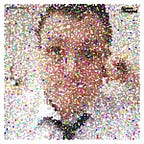Dungeons & Dragons: Wrath of the Dragon God (2005)
[caption id=”attachment_3792" align=”alignright” width=”300"]
“With this magical device, I can finally ditch the blue lips!”[/caption]
Twitter Plot Summary: Damodar has returned and, a bit insane, decides to awaken the Dragon God from his slumber. Some heroes have to stop him, obviously.
For anyone who has seen/experienced/endured the first Dungeons and Dragons movie, fear ye not. Apart from the return of Bruce Payne as Damodar, this sequel has absolutely nothing to do with that train wreck of a movie. I can imagine a collective sigh of relief from everyone on reading that point.
Tonally it’s far more appropriate than the first film, more serious in its style but with the odd moment of levity where appropriate. It also proves to be less abusive with its CGI. While this is no doubt from a purely budgetary perspective, it is definitely something that stands in its favour. There’s a certain appeal to seeing practical locations being used instead of a green screen, and other than the fact it’s cheap to film there you can see why a lot of modern productions are decamping to Eastern Europe (in this case, Bulgaria) in order to make their films. The scenery makes for a hugely attractive film, even if everything has been given a very cold filter in post production.
The plot isn’t all that dissimilar to the first film. Set 100 years after those events, Damodar is still around because Profion apparently cursed him to exist as an undead entity. After that amount of time as nothing more than a zombie, it’s no wonder that Damodar is a bit cranky. At least he’s been able to ditch the ridiculous blue lips this time. A small band of adventurers, including the budget Iain Glen — Mark Dymond — go on a quest to stop Damodar from using the Orb of Falazure and awaken the dragon god that lives in the mountain. So far, so standard fantasy fare. And, to be honest, it never elevates itself beyond that, but then if it did it would not be as faithful to its source material.
[caption id=”attachment_3793" align=”alignleft” width=”300"]
“Jeremy Irons did WHAT in the first film?!”[/caption]
There is of course an obligatory appearance from a dragon, the titular Dragon God in fact, and features a narrative that has its own fair share of twists and turns on both sides. It is of further credit that many references to the original game have been included, even if this may be mostly lost on non-D&D players such as myself. In my case it merely added colour and depth to the world rather than being recognisable elements from the game, but at least they are included rather than almost summarily dismissed. Such close attention to detail is a marked improvement.
It may feel in places like an extended episode of Stargate SG1 circa Seasons 8–10, but that is hardly a criticism, especially when you look at how much this production achieves without big name star power and an over the top effects budget behind it. By focusing on character and using effects as an occasional flourish rather than the main talking point, Wrath of the Dragon God is a solid but unspectacular sequel. However you consider it, this is leagues ahead of the 2000 film whether it intended to be or not. That can only be considered a good thing.
Score: 2.5/5
